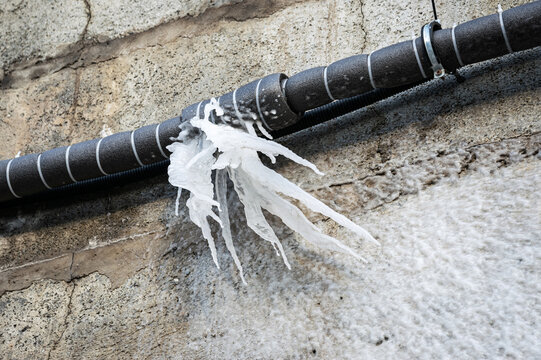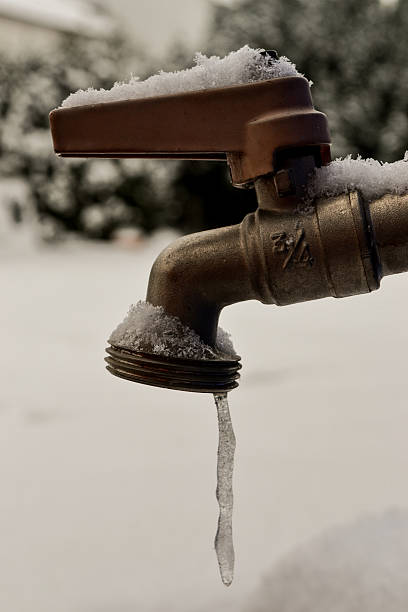Crucial Tips to Avoid Frozen Plumbing in Cold Weather: Professional Guidance
Crucial Tips to Avoid Frozen Plumbing in Cold Weather: Professional Guidance
Blog Article
We've unearthed the article involving Prevent Frozen Pipes below on the net and figured it made good sense to relate it with you on my blog.

Winter can ruin your plumbing, specifically by freezing pipelines. Below's exactly how to avoid it from occurring and what to do if it does.
Intro
As temperatures drop, the danger of frozen pipelines boosts, possibly resulting in pricey repair work and water damage. Comprehending just how to prevent icy pipelines is vital for homeowners in cold environments.
Avoidance Tips
Protecting vulnerable pipes
Cover pipelines in insulation sleeves or make use of warm tape to secure them from freezing temperatures. Focus on pipelines in unheated or external locations of the home.
Heating methods
Keep indoor rooms appropriately heated up, specifically locations with plumbing. Open closet doors to enable warm air to distribute around pipes under sinks.
How to identify frozen pipes
Seek reduced water flow from faucets, uncommon odors or sounds from pipes, and noticeable frost on revealed pipelines.
Long-Term Solutions
Structural changes
Consider rerouting pipes far from exterior wall surfaces or unheated areas. Add additional insulation to attic rooms, cellars, and crawl spaces.
Updating insulation
Buy high-grade insulation for pipelines, attic rooms, and walls. Correct insulation aids keep consistent temperature levels and minimizes the risk of frozen pipelines.
Safeguarding Outside Pipes
Garden hose pipes and outdoor taps
Separate and drain garden hoses prior to winter season. Mount frost-proof faucets or cover outdoor taps with protected caps.
Understanding Frozen Pipelines
What creates pipes to ice up?
Pipes ice up when exposed to temperatures listed below 32 ° F (0 ° C) for prolonged periods. As water inside the pipelines freezes, it expands, putting pressure on the pipeline wall surfaces and possibly triggering them to break.
Risks and damages
Icy pipelines can cause water system interruptions, residential property damages, and costly fixings. Burst pipelines can flood homes and cause considerable structural damage.
Indicators of Frozen Water Lines
Recognizing icy pipes early can prevent them from breaking.
What to Do If Your Pipes Freeze
Immediate actions to take
If you suspect frozen pipes, keep faucets open to ease stress as the ice thaws. Make use of a hairdryer or towels taken in hot water to thaw pipes gradually.
Final thought
Avoiding icy pipelines calls for positive measures and quick actions. By understanding the causes, indications, and preventive measures, property owners can secure their pipes during cold weather.
5 Ways to Prevent Frozen Pipes
Drain Outdoor Faucets and Disconnect Hoses
First, close the shut-off valve that controls the flow of water in the pipe to your outdoor faucet. Then, head outside to disconnect and drain your hose and open the outdoor faucet to allow the water to completely drain out of the line. Turn off the faucet when done. Finally, head back to the shut-off valve and drain the remaining water inside the pipe into a bucket or container. Additionally, if you have a home irrigation system, you should consider hiring an expert to clear the system of water each year.
Insulate Pipes
One of the best and most cost-effective methods for preventing frozen water pipes is to wrap your pipes with insulation. This is especially important for areas in your home that aren’t exposed to heat, such as an attic. We suggest using foam sleeves, which can typically be found at your local hardware store.
Keep Heat Running at 65
Your pipes are located inside your walls, and the temperature there is much colder than the rest of the house. To prevent your pipes from freezing, The Insurance Information Institute suggests that you keep your home heated to at least 65 degrees, even when traveling. You may want to invest in smart devices that can keep an eye on the temperature in your home while you’re away.
Leave Water Dripping
Moving water — even a small trickle — can prevent ice from forming inside your pipes. When freezing temps are imminent, start a drip of water from all faucets that serve exposed pipes. Leaving a few faucets running will also help relieve pressure inside the pipes and help prevent a rupture if the water inside freezes.
Open Cupboard Doors
Warm your kitchen and bathroom pipes by opening cupboards and vanities. You should also leave your interior doors ajar to help warm air circulate evenly throughout your home.

Hopefully you enjoyed reading our article about Prevent Frozen Pipes . Thanks a lot for taking the time to browse our short article. Sharing is good. You just don't know, you might be doing someone a favor. I cherish your readership.
Make An Appointment Report this page